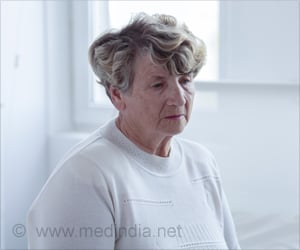Don’t trace massacres to students' personal problems, it is the environment that is at fault, note several observers.
It is the school system, the socio-educational environment in the US that is responsible for periodical massacres in campuses, observers say.
They stress that it is wrong to blame any individual as is being done in the case of Seung-Hui Cho, the South Korean, held responsible the worst college shoot-out in that country in recent times.In their first public reaction, the family of Cho said, "We are humbled by this darkness. We feel hopeless, helpless and lost. This is someone that I grew up with and loved. Now I feel like I didn't know this person…We have always been a close, peaceful and loving family. My brother was quiet and reserved, yet struggled to fit in. We never could have envisioned that he was capable of so much violence."
Chris Davids, a Virginia Tech senior recalled that the South Korean immigrant almost never opened his mouth and would ignore attempts to strike up a conversation. Once, in English class, the teacher had the students read aloud, and when it was Cho's turn, he just looked down in silence, Davids recalled. Finally, after the teacher threatened him with an F for participation, Cho started to read in a strange, deep voice that sounded "like he had something in his mouth," Davids said. "As soon as he started reading, the whole class started laughing and pointing and saying, 'Go back to China.'
Dr. Marleen Wong, director of Crisis Counseling and Intervention Services for the Los Angeles Unified School District and director of the Trauma Services Adaptation Center for Schools and Communities in Los Angeles said that there have been more than 600 completed school shootings since the late 1980s, with hundreds more foiled by vigilant administrators and police officers.
Schoolyard massacres are rebellions against oppressive and bullying environments by students who can't take it anymore, contends Mark Ames, a noted author.
There were three schoolyard shootings in 1997, one after another, at Pearl, Paducah and Jonesboro. They happened one after another, creating a snowball effect that helped propel the schoolyard massacre coastward and into cities, to Pennsylvania and Oregon, and later to Columbine High in Littleton, Colorado.
Advertisement
"It isn't the schoolyard shooters who need to be profiled -- they can't be. It is the schools that need to be profiled." Michael Carneal, who slaughtered three students in a high school prayer class in West Paducah, Kentucky in December 1997 was found to have downloaded "The School Stopper's Textbook: A Guide to Disruptive Revolutionary Tactics; Revised Edition for Junior High/High School Dissidents," which calls on students to resist schools' attempts to mold students and enforce conformity.
Advertisement
Eric Harris and Dylan Klebold, who mowed down 12 fellow students and a teacher in 1999 before killing themselves in a Columbine school, openly declared that their planned massacre was intended to ignite a nationwide uprising.
"We're going to kick-start a revolution, a revolution of the dispossessed!" In a Yahoo! club devoted to the killers, a 15-year-old girl, Elizabeth, writes: "They are really my heroes. They are in a way gods ... since I don't believe in 'GOD' or any of that other crap that goes along with it. They are the closest thing we can get to it, and I think they are good at it. They stood up for what they believe in, and they actually did something about it."
Dylan Klebold and Eric HarrisBoth came from two-parent homes, both loved their parents and both were highly intelligent but erratic students. They weren't Nazis or drug addicts. They weren't even gay, as some theorized. Nor was Cho. Obviously bullying is a very serious problem in schools. America is waking up to the sobering reality of our bullying epidemic.
Once characterized as a normal, character-building rite of passage for school children, researchers and educators today agree that bullying can create serious physical and mental health consequences for both the bully and his or her target.
Bullying experts JoLynn Carney and Richard Hazler, say, "A child's anticipatory stress—the intense anxiety of waiting for the next abusive event—is lasting. That's the stuff that creates the long-term trauma."
One recent study found that 60 percent of boys classified as bullies in middle school were convicted of at least one crime by the age 24. Other research found that one-fourth of American students are bullied at school because of their race, ethnicity, gender, religion, sexual orientation or disability. Unchecked, bullying can even escalate to the tragedies of school shootings and teen suicides, both of which have been linked to harassment from peers.
Complaints to authorities rarely lead to any reaction. They would not do anything to challenge the social structure that gives rise to horrid bullying sometimes, critics say. Rampant moral hypocrisy that promotes the most two-faced, mean and shallow students to the top of the pecking order and maximally stressed parents who constantly push their children to ever higher scores could both be at the root of the problem it is felt.
“The need for mental health services on college campuses is even greater, students have high expectations for themselves. It is a time where they should be sorting out their lives, what their strengths are, what their weaknesses are, but some people feel they are disappointing themselves or their families,” Dr.Wong pointed out.
Source-Medindia
GPL/B





